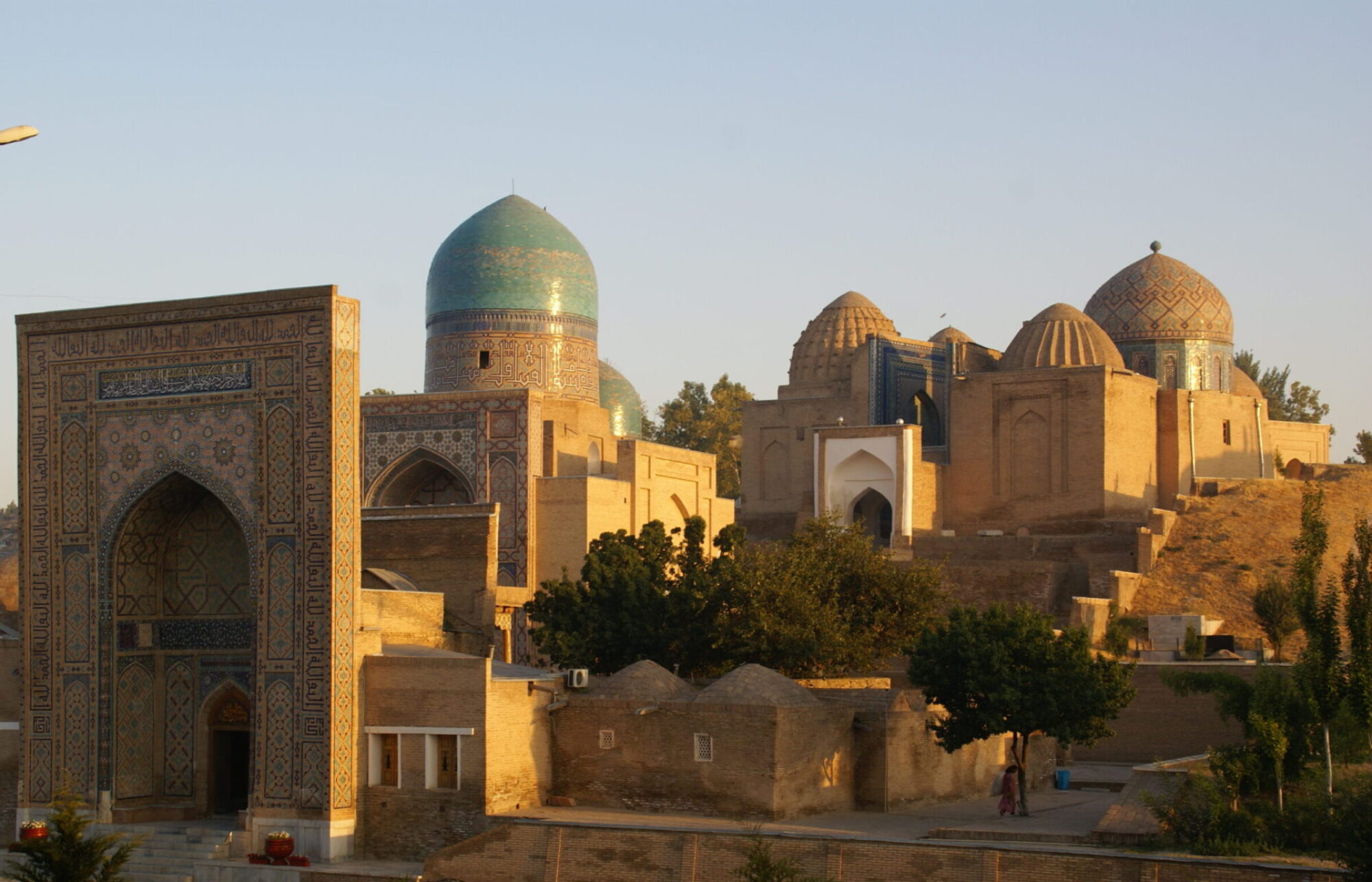The Timurid necropolis of Shah-i Zinda (The Living King) commemorates the Muslim martyr Qutham ibn ‘Abbas (d. 677) who allegedly died in Samarqand. The complex is situated north of the city, on the southern slope of Afrasiyab, the oldest occupied hillside with archaeological layers dating back to the middle of the first millennium BC. The necropolis is one of the most sacred pilgrimage sites across Central Asia. The first structures at Shah-i Zinda including mausoleums and a royal madrasa (Islamic religious school) date back to the Qarakhanid dynasty (840–1212).
The current complex consists of several mosques and mainly one-chamber mausoleums built after 1350, most of them dedicated to Timur’s amirs (military commanders) and female family members. The ensemble comprises three groups of mausoleums: lower, middle and upper connected by four-arched domed passages locally called chartaq. All facades along the main corridor are covered with lavish revetments employing ornaments executed in different techniques: carved majolica, glazed terracotta, polychrome overglaze and monochrome glazed ceramic, and tile mosaic. In particular, mosaic faience, was perfected under the Timurids after the 1390s and some of the most exquisite examples are found at Shah-i Zinda. These tile revetments also protect the structures erected with baked brick from constant temperature fluctuations (very hot summers and cold winters), rain and dump.
The earliest images of Shah-i Zinda are recorded in the Turkestan Album (1872) commissioned by Konstantin Petrovich von Kaufmann (1818-1882), the first governor general of Russian Turkestan. Excavations of the site started in 1922 and continued until 1925. However, a systematic approach to the study of its architecture, archaeological layers and history did not begin until 1957 when the excavations were led by Nina B. Nemtseva, who worked at Shah-i Zinda until 2001. After 2005 Shah-i Zinda underwent a massive restoration campaign throughout which new mausoleums were built. Original Timurid tile work was substituted by modern mass-produced tiling. The remains of the portal to the 11th-century Qarakhanid Madrasa (1066) were demolished. Several Qurʻanic texts (3:169, 3:170) were added to the main entrance portal originally built in 1435.


